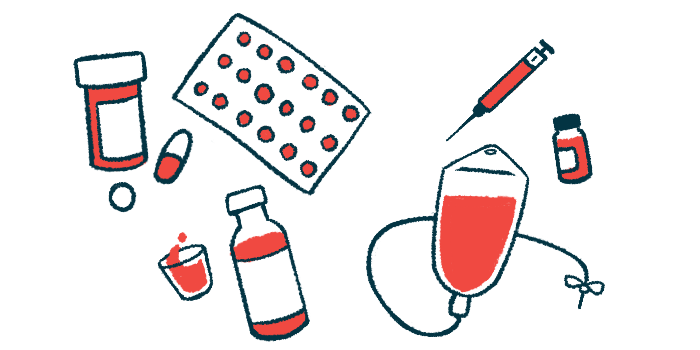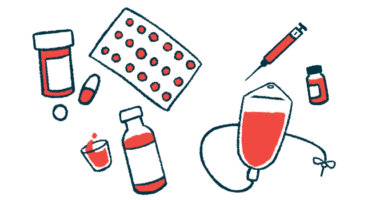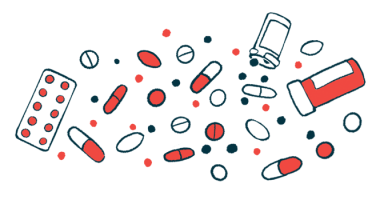Rituximab Found Better for GPA Remission Than Cyclophosphamide
Study compares how well the 2 medications can induce remission in 194 patients

Rituximab is superior to cyclophosphamide at inducing disease remission after six months in people with granulomatosis with polyangiitis (GPA) — a type of ANCA-associated vasculitis (AAV) — according to a study in France.
Similar findings were found for subgroups of GPA patients, such as those newly diagnosed with the disease and those with a more recent treatment.
“These findings may inform clinical decision-making regarding the choice of remission-inducing regimen for patients with GPA,” researchers wrote.
The study, “Rituximab vs Cyclophosphamide Induction Therapy for Patients With Granulomatosis With Polyangiitis,” was published in JAMA Network Open.
GPA is a type of AAV characterized by inflammation and damage to small blood vessels as a result of self-reactive antibodies called ANCAs that most often target a protein called proteinase 3 (PR3).
Its related inflammation is specifically caused by granulomas, or masses of immune cells, that form in the vessels, mainly affecting the lungs, kidneys, and upper respiratory tract. This type of AAV is typically associated with a lower chance of achieving complete remission and a higher risk of relapse — to which PR3-targeting ANCAs are also linked.
Standard AAV treatment consists mostly of immunosuppressive therapies. Remission-induction treatment typically combines glucocorticoids, such as prednisone, with cyclophosphamide or rituximab.
Rituximab promotes death of antibody-producing immune B cells
Rituximab, which promotes the death of antibody-producing immune B-cells, is sold as Rituxan in the U.S. and MabThera in Europe, and is available as biosimilars.
Data from two previous clinical trials — the Phase 2/3 RAVE study (NCT00104299) and the RITUXVAS trial (ISRCTN28528813) — showed that rituximab was not inferior to cyclophosphamide at promoting remission in severe AAV cases. Neither treatment was found to be particularly superior for GPA patients.
However, later analyses showed that PR3-AAV patients treated with rituximab “achieved complete remission at 6 months more frequently than cyclophosphamide-treated patients,” the researchers wrote.
While this suggested that GPA patients may also benefit more from rituximab induction therapy, whether this is true remains to be determined.
To address this, a team of researchers in France compared the efficacy of rituximab versus cyclophosphamide at inducing remission in 194 GPA patients (110 men and 84 women) who were participating in the French Vasculitis Study Group Registry.
These findings may inform clinical decision-making regarding the choice of remission-inducing regimen for patients with GPA
Patients’ mean age was 54 years, 165 (85.1%) were newly diagnosed with GPA, and 147 of 182 with data available (80.8%) were positive for PR3-ANCA. A total of 61 patients received rituximab and 133 were given cyclophosphamide as induction therapy.
Patients also had a mean score of 15 on the Birmingham Vasculitis Activity Score (BVAS), which is used to assess the level of disease activity. The score ranges from 0 to 63, with 0 meaning no disease activity.
The primary objective of the study was to evaluate the percentage of patients treated with either medication who achieved remission at six months. Remission was defined as a BVAS score of 0 together with a low prednisone dose (10 mg per day or less).
Results showed that a significantly greater proportion of rituximab-treated patients achieved this outcome relative to those on cyclophosphamide (73.1% vs. 40.1%) — reflecting an 82% higher chance of achieving remission with rituximab.
The remission rate remained significantly higher with rituximab when analyzing only the newly diagnosed patients (76.1% vs. 41.6%) or those most recently treated for the disease (75.2% vs. 44.5%).
No increased toxicity signals or abnormal effects were found with rituximab
In addition, a slightly greater proportion of patients treated with rituximab achieved a BVAS score of 0, regardless of prednisone dose, than those in the cyclophosphamide group (85.5% vs. 83.2%). However, this difference failed to reach statistical significance.
This may be due to “residual vasculitis activity that was undetectable because of glucocorticoid masking,” the team wrote.
No increased toxicity signals or abnormal effects were found in rituximab-treated patients compared with those given cyclophosphamide.
“This comparative effectiveness analysis using observational data from a prospective rare disease registry allowed treatment comparisons — so far poorly addressed — and confirmed the hypothesis that rituximab could be superior to cyclophosphamide for induction of GPA remission,” the researchers wrote.
Furthermore, it confirmed rituximab’s superiority in newly diagnosed patients, “a finding not yet reported,” the team wrote.
Overall, “we think that our data are likely to be representative of the entire GPA spectrum and that our sample is a good representation of patients in whom the question of induction with rituximab or cyclophosphamide arises,” the researchers concluded.








